Average Width Of A Car | Secrets Why Size Truly Matters
Hello, fellow car enthusiasts!
Today, we’re steering our attention toward car dimensions, specifically focusing on the average width of a car…
Have you ever wondered why the length and width of a car matter so much?
Or you’ve found yourself puzzled by the vast array of available car sizes. Well, you’re not alone.
Understanding the importance of car dimensions is crucial for a variety of reasons.
Let’s explore why.
Table of Contents
Importance of Car Dimensions
Car dimensions, including length and width, play a significant role in the functionality and usability of a vehicle.
They can impact everything from the car’s performance and fuel efficiency to its comfort and capacity.
For instance, a compact car might be perfect around city streets and squeezing into tight parking spaces.
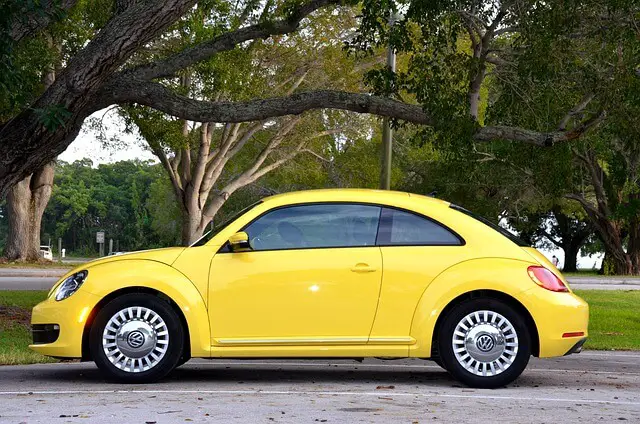
But if you’re planning a family road trip, you might prefer the spacious interior of an SUV.
Here is the bar chart representing the average SUV and truck dimensions:
You can view the chart directly via this link.
In electric vehicles, dimensions can even influence the car’s range.
Smaller, more aerodynamic cars are more energy-efficient, which can help you squeeze out a few extra miles from your battery.
Check out our article The Future of Electric Vehicles: The EV Revolution for more insights.
Why Knowing the Width and Length of a Car is Crucial
Knowing the width and length of a car isn’t just useful for trivia nights. It’s crucial information for anyone looking to buy a new vehicle.
The width of a car can affect how easy it is to maneuver in traffic and park in tight spaces.

A wider car might offer more interior space, but it could also be more challenging to handle and park, especially in urban environments.
The length of a car, on the other hand, can impact its cargo capacity and interior space.
Longer cars tend to have more room for passengers and luggage, making them popular for families and road trip enthusiasts. But they can also be harder to park and navigate in tight spaces.
Ultimately, understanding car dimensions can help you choose the right vehicle for your needs.
Whether you’re a city dweller looking for a compact ride or a family needing a spacious SUV, knowing the dimensions can guide your decision.
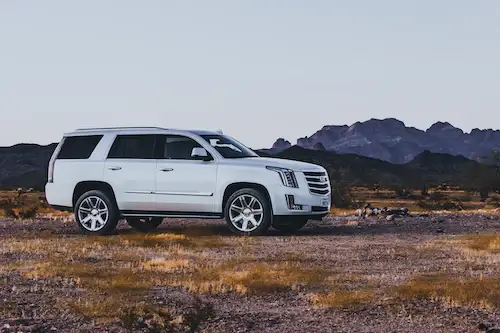
Stay tuned as we delve deeper into car dimensions in the following sections.
We’ll be exploring average car lengths and widths, breaking them down by car type, and even giving you some practical tips on measuring a car’s dimensions.
So, buckle up, and let’s get started!
Remember: The perfect car isn’t just about looks or power. It’s also about finding the right fit for your lifestyle.
For more insights on choosing the right car, especially an SUV, check out our guide on Choosing the Best SUV for Your Family.
The Basics of Car Dimensions
When it comes to understanding car dimensions, it’s crucial to know that these measurements can vary significantly depending on the type of vehicle.
What is the Average Length of a Car?
The average length of a car is around 14.7 feet. However, this can fluctuate based on the manufacturer and model.
For instance, standard automobiles and trucks typically range between 10-18 feet long.
A midsize sedan, like a Honda Accord, is around 14 feet long, while a smaller car, like a Mini Cooper, measures about 10 feet long.
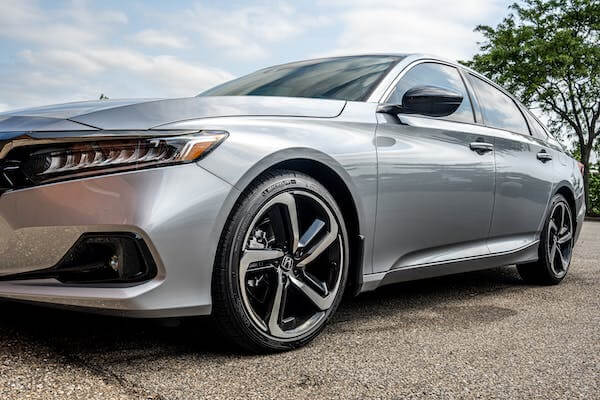
On the other end of the spectrum, the Rolls-Royce Phantom is around 20 feet long, making it one of the longest passenger cars available.
What is the Average Width of a Car?
The average width of a car is approximately 5.8 feet, but this can also vary. For example, the Chevrolet Spark, the narrowest car in the country, measures 5.2 feet wide.
In contrast, the Tesla Model X is the broadest vehicle outside the ultra-luxury market, measuring 7.4 feet wide with mirrors folded.
Another source suggests that the average width of a car ranges from 5.4 to 9 feet.
Understanding these dimensions is essential when considering parking, garage storage, and safety. Before making a purchase, it’s advisable to verify the actual dimensions of the vehicle you’re considering.
Average Car Lengths and Widths by Type
Regarding vehicle dimensions, a wide spectrum caters to various needs, preferences, and lifestyles.
Understanding the average lengths and widths of different types of cars can significantly influence your decision-making process when purchasing a new vehicle.
| Vehicle Type | Model Example | Average Width (feet) | Average Width (mm) |
|---|---|---|---|
| Mini Car / Economy Car | Smart EQ ForTwo | 5.4 | 1663 |
| Small Sedan / Compact Car | Kia Forte | 5.8 | 1780 |
| Medium Sedan / Mid-Sized Car | Audi A4 | 6.06 | 1847 |
| Large Sedan / Full-Sized Car | Dodge Charger | 6.25 | 1905 |
| Small Station Wagon / Hatchback | Volkswagen Golf GTI | 5.9 | 1799 |
| Mid-size or Large Station Wagon | Volvo V60 | 6.07 | 1850 |
| Compact SUV / Small SUV | Honda CR-V | 6.09 | 1855 |
| Intermediate SUV / Mid-Sized SUV | Ford Explorer | 6.57 | 2004 |
| Full-size SUV/ Large SUV | Cadillac Escalade | 6.76 | 2060 |
| Sports Cars | Porsche 911 | 6.08 | 1852 |
| Sports Sedan or Sports Saloon | BMW M5 | 6.21 | 1892 |
| Supercar or Hypercar | Bugatti Chiron | 6.56 | 1998 |
| Small or Medium-size Pickup Trucks | Nissan Frontier | 5.55 | 1690 |
| Full-size Pickup Truck | Ford F-450 XL | 8.00 | 2438 |
| Passenger Vans | Ford Transit Passenger XLT Van | 6.76 | 2060 |
| Cargo Vans | Mercedes Benz Sprinter | 6.53 | 1993 |
| Minivans | Honda Odyssey | 6.54 | 1994 |
Particularly when considering factors such as garage space, parking availability, and the driving you’ll be doing.
Subcompact economy cars, for instance, are on the smaller end of the spectrum, with an average width of around 5.5 feet or 66 inches.
These cars are perfect for city driving and easy parking. On the other hand, large sedans, also known as full-sized or executive cars, have larger dimensions, with examples like the Dodge Charger measuring 78.3 inches or 6.5 feet in width.
These vehicles offer more interior space and comfort, making them ideal for long drives or family use.
SUVs, a popular choice for many, also come in different sizes.
Compact SUVs like the Hyundai Tucson average around 73 inches or 6.1 feet, while full-size SUVs like the Ford Expedition have an average width of 85 inches or 7 feet.
These vehicles provide ample interior space and are well-suited for off-road driving and larger families.
Sports or performance cars, designed for speed and aesthetics, can vary in width from 5.7 feet up to 6.5 feet.
Pickup trucks, often used for work purposes due to their cargo space, also vary in size.
For example, the Ford Ranger has an average width of 6.3 feet, while the Dodge Ram 1500 has an average width of 6.8 feet.
| Car Type | Average Length (feet) | Average Width (feet) |
|---|---|---|
| Subcompact Economy | 12-14 | 5-6 |
| Small Sedan | 14-16 | 5-6 |
| Mid-Sized Sedan | 15-17 | 6-7 |
| Large Sedan | 16-18 | 6-7 |
| Station Wagon | 16-18 | 6-7 |
| Compact SUV | 14-16 | 6-7 |
| Mid-Size SUV | 16-18 | 6-7 |
| Full-Size SUV | 17-20 | 6-8 |
| Sports Car | 14-16 | 6-7 |
| Pickup Truck | 18-22 | 6-8 |
Here are the average car dimensions by type:
- Subcompact Economy Cars: These vehicles have an average width of 5.5 feet or 66 inches. Examples include the Smart EQ ForTwo (65 inches or 5.4 feet) and the Hyundai Accent (66 inches or 5.5 feet).
- Small Sedans: Small Sedans have an average width of 5ft 10″. Examples include the Hyundai Elantra (70.87 inches or 5.9 feet) and the Toyota Corolla (69 inches or 5.7 feet).
- Mid-Sized Sedans: The average midsize Sedan measures around 6 feet. Examples include the Honda Accord (72 inches or 6 feet) and the Toyota Camry (73.1 inches or 6.1 feet).
- Large Sedans: Large Sedans, also known as full-sized or executive cars, have larger dimensions. Examples include the Dodge Charger (78.3 inches or 6.5 feet) and the Chrysler 300 (74.8 inches or 6.3 feet).
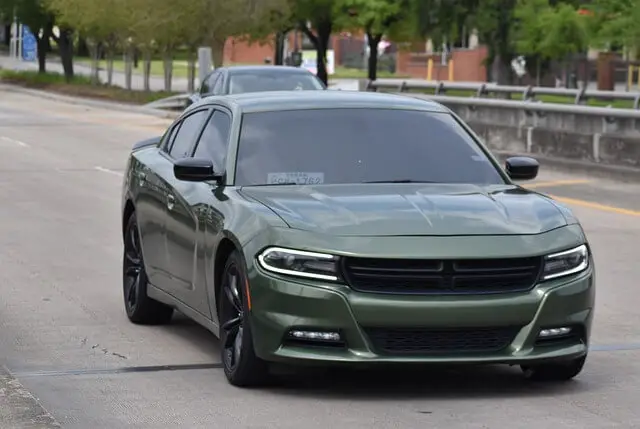
- Midsize/Large Station Wagons: Small station wagons include the Subaru Outback and Audi A6 Allroad, which measure 6.2 ft or 74 inches in width.
- Compact SUVs: The average width of these vehicles is 73 inches or 6.1 feet. Examples include the Hyundai Tucson (73.4 inches 6.11 feet) and the Honda CR-V (73 inches or 6 feet).
- Midsize SUVs: Examples of midsize SUVs include the Jeep Grand Cherokee (76.5 inches or 6.3 feet) and the Kia Telluride (78.3 inches or 6.5 feet).
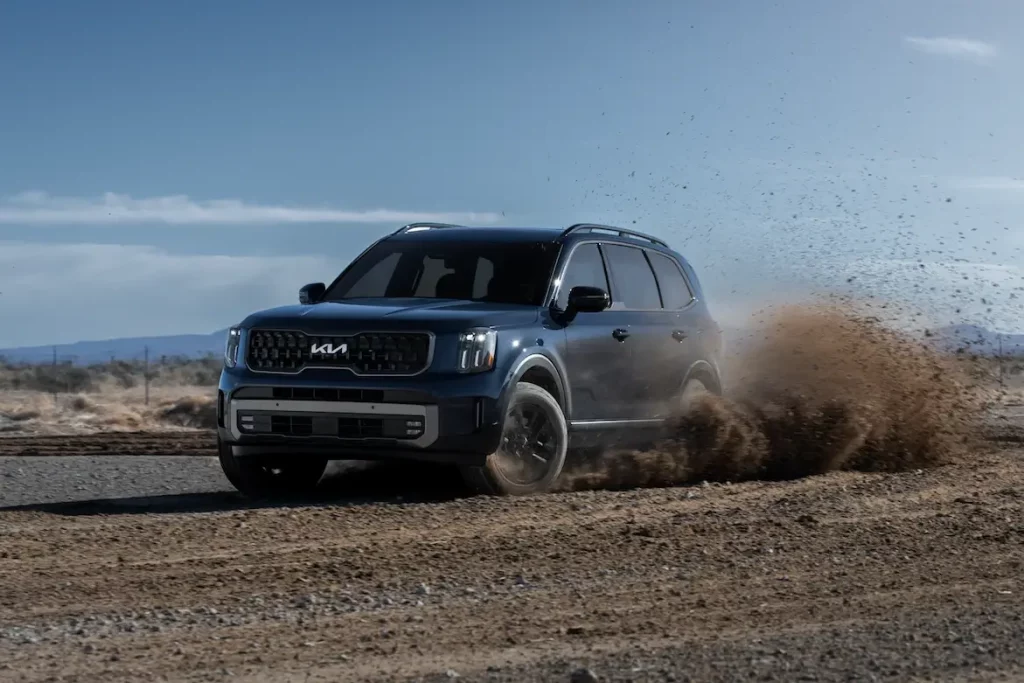
- Full-Size SUVs: Full-size SUVs have an average width of 85 inches or 7 feet. Examples include the Jeep Grand Wagoneer (83.6 inches, 6.9 feet) and the Ford Expedition (80.5 inches or 6.7 feet).
- Sports/Performance Cars: Sports vehicles can vary in width from 5.7 feet to 6.5 feet. Examples include the Acura NSX (87.3 inches or 7.25 feet) and the BMW Z4 (73.3 inches or 6 feet).
- Pickup Trucks: Pickup trucks vary in size. For example, the Ford Ranger has an average width of 6.3 feet, while the Dodge Ram 1500 has an average width of 6.8 ft.
These dimensions can be helpful when considering the size of your garage or parking space and the driving you’ll be doing.
Here is the bar chart representing the average car widths by type:
You can view the chart directly via this link.
The Intricacies of Car Design: A Look at the Number of Parts in a Car
When discussing car dimensions, it’s also worth considering the complexity of car design and the number of parts that make up a vehicle.
It’s not just the length and width that matter, but also what’s inside the car that contributes to its functionality and performance.
Did you know that an average car comprises approximately 30,000 parts? This includes every piece, from the larger components like the engine and transmission to the smallest screws and bolts.
Each part plays a crucial role in the vehicle’s overall operation, contributing to its safety, performance, and comfort.

Understanding the number of parts in a car can give you a greater appreciation for the intricacies of car design and manufacturing.
It’s a testament to the engineering marvel of the modern automobile, where every single part has a specific purpose and function, no matter how small.
If you’re interested in learning more about the various parts that make up a car and their functions, we invite you to read our in-depth article on the truth about how many parts make a car.
It provides a detailed breakdown of the different components of a vehicle and how they work together to get you from point A to point B.
Practical Applications of Car Dimensions
Understanding the dimensions of your car is about more than knowing if it will fit in your garage or parking space.
It’s about understanding how the size of your vehicle impacts your everyday life.
From maneuverability and fuel efficiency to comfort and safety, the dimensions of your car can significantly influence your driving experience.
Another practical aspect to consider is the adjustment of car mirrors.
Properly adjusted mirrors can help drivers better understand the dimensions of their car and eliminate blind spots, enhancing safety on the road.
“The Society of Automotive Engineers (SAE) published a paper in 1995 suggesting how outside mirrors could be adjusted to eliminate blind spots.
The paper advocates adjusting the mirrors so far outward that the viewing angle of the side mirrors just overlaps that of the cabin’s rearview mirror.
This can be disorienting for drivers used to seeing the flanks of their cars in the side mirrors. But when correctly positioned, the mirrors negate a car’s blind spots.
This prevents the need to glance over your shoulder to change lanes safely and the need for an expensive blind-spot warning system.”
Tony Quiroga, Editor-in-Chief, Car and Driver.
Understanding and applying this advice can help drivers make the most of their vehicle’s dimensions, improving safety and confidence on the road.
How to Measure Car Length and Width
If you’re curious about the exact dimensions of your car, there are a few simple methods to determine them.
One of the easiest ways is to use a VIN decoder. Type “VIN decoder” into a web browser, select one of the free options available and enter your Vehicle Identification Number.
The results will provide detailed information about your car, including its dimensions.
Alternatively, using a yardstick or tape measure, you can measure your car manually. This method can be helpful if your vehicle has aftermarket parts that might alter its original dimensions.
To get the most accurate result, measure underneath the car.
The Impact of Car Dimensions on Everyday Life
The dimensions of your car can have a significant impact on your everyday life. For example, a smaller car might be more practical if you live in a city with narrow streets and limited parking.
On the other hand, if you frequently go on road trips or have a large family, a bigger car with more cargo space might be more suitable.
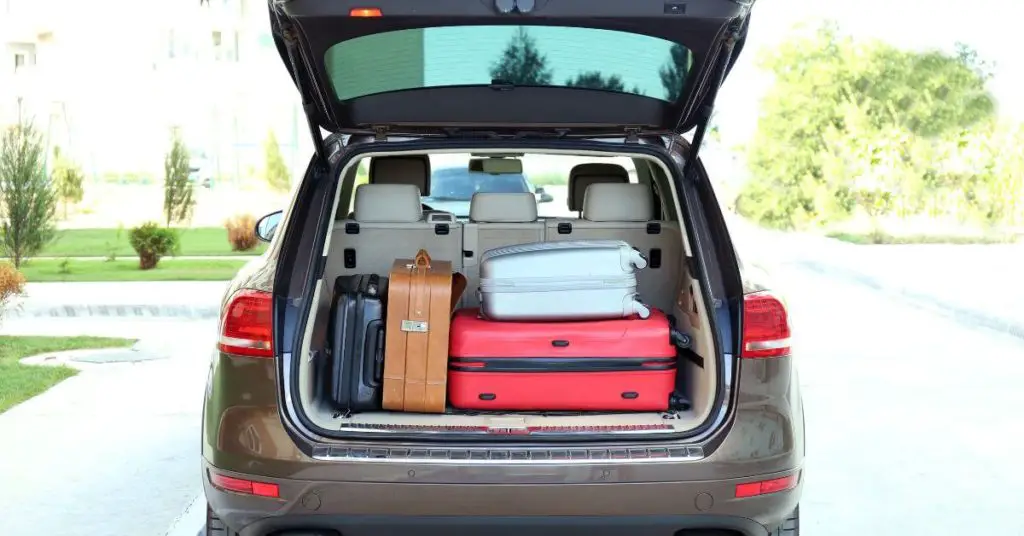
Moreover, the size of your car can also affect its fuel efficiency. Smaller, more aerodynamic vehicles tend to be more fuel-efficient, saving you money in the long run.
On the other hand, larger cars often provide a sense of safety and comfort, which can be important for many drivers.
In conclusion, understanding the dimensions of your car and how they impact your everyday life can help you make more informed decisions when purchasing a vehicle.
Whether you’re looking for a compact car for city driving or a spacious SUV for family road trips, the dimensions of a vehicle play a crucial role in determining its suitability for your lifestyle.
Frequently Asked Questions (FAQs)
What is the average length of a car?
Typically, the average length of a vehicle is around 14.7 feet. Different manufacturers and models will have varying car sizes; standard cars and trucks are typically 10-18 feet long.
A midsize sedan is around 14 feet long, while a smaller car, like a Morris Mini Cooper, will be about 10 feet long. Chevrolet Spark (under 12 feet) is the shortest passenger car, and Rolls-Royce Phantom (around 20 feet long) is the longest passenger car in the country.
A full-size vehicle has a length of approximately 15.7 feet. Factors like cargo room and passenger space increase the size of a car.
What is the average width of a car?
The average width of a car is around 5.4 to 9 feet or 1645 to 2743 mm. You will need to add two feet minimum on either side, to account for opening the doors to your vehicle to exit the vehicle.
A car’s actual width varies according to what kind it is. Chevrolet Spark (5.2 feet) is the narrowest car in the country. Outside the ultra-luxury market, Tesla Model X is the broadest vehicle, measuring 7.4 feet wide with folded mirrors.
Factors like side airbags and lane departure sensors can increase a vehicle’s width more than the dimensions of typical parking spaces.
How can I find out the length of my car?
There are a few simple methods for determining your car’s size. A VIN decoder is the simplest way to determine the car’s length. Type a VIN decoder into a web browser to locate them.
There are various free ones to select from. Enter your Vehicle Identification Number into the VIN decoder, and the results will appear. Also, any online automobile shop can tell you how long your vehicle is.
Enter the number of your license plate. The results for your unique vehicle will appear, and you’ll be able to look up your car’s measurements and other details.
How does the length of a car affect its safety?
Safety is the primary factor that comes to mind when considering the average car length. Often, we believe longer cars offer better safety.
However, the truth is that smaller cars provide better safety than larger cars, thanks to improved engineering, materials, and construction.
How can I find the exact width and length of my car?
There are several methods to find the exact width of a car you may consider purchasing. Add at least 2 feet on all four sides to accommodate opening doors on either side. You can find the exact car width with a VIN decoder, ask your local dealer, measure your car’s dimensions manually, or use a car valuation website and search your vehicle type.
Conclusion
Understanding the dimensions of a car is more than just knowing how big your vehicle is.
It’s about appreciating how those dimensions impact your daily life, from parking and navigating tight city streets to ensuring the comfort and safety of your passengers.
The average length and width of a car can vary significantly depending on the type of vehicle, from compact economy cars to full-size SUVs and pickup trucks.
Each type of vehicle offers its unique blend of benefits and challenges, and understanding these can help you make an informed decision when purchasing a car.
Remember, the dimensions of your car can affect everything from the ease of parking to the comfort of your passengers and the cargo you can carry.
So, whether you’re a first-time car buyer or a seasoned motorist, it’s essential to consider these factors.
We hope this guide has given you a deeper understanding of car dimensions and their practical implications.
If you’re looking for a new car, use this knowledge to guide your decision-making. And if you’re already a car owner, use this information to understand better and appreciate your vehicle.
If you found this article helpful, we invite you to explore more of our content. We have a wealth of information on car-related topics, from in-depth car reviews to practical tips and advice.
For instance, if you’re interested in SUVs, check out our article on the best SUV with 3rd-row seating for your family.
Or, if you’re curious about electric vehicles, our article on the future of electric vehicles is a must-read.
Remember, at Spot For Cars; we’re not just about providing information; we’re about creating a community of car enthusiasts.
So, don’t hesitate to comment, share our articles with your friends, or contact us with any questions. We’re always here to help. Drive safe!








